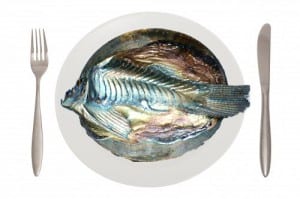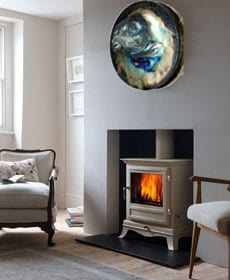IT CAME FROM THE STORES……..
By Mark Carnall, on 23 November 2011
Friends of the Grant Museum will know that the last year was a tough year for the museum. Not only did we have to move the museum but our stores were plagued with floods. This has meant that our stored collections have been out of action for over a year. The turmoil hasn’t quite ended but recently the stored material became a little bit more accessible so myself and our new documentation assistant have been working through the stored collection reacquainting ourselves with objects and occasionally discovering material for the first time. The reason why we have material in stores in the first place is partly because the collection is too large to put on display (currently, only about 5% of the collection is on display) and also because some material isn’t appropriate for display either because it isn’t Hollywood enough or because it is material that is better suited for research use. Being a university museum a fair proportion of the collection was created for use in research. In this occasional series I hope to highlight some of the objects in our stores starting with these lovely objects I found last week.
 These 1cm in diameter electron microscope stubs were in a box with a series of what looked like transparent resin biscuits with tiny raisins in them. Fortunately, a letter was tucked inside the box, meaning I didn’t have to try to work out what these objects were and who had made them entirely from scratch. Clockwise from top left in the image above we have Xenopus (frog) feet, the head of Corydoras (armoured catfish), the head of a ‘minnow’ and the body of Corydoras possibly from the same fish as the head. These specimens were prepared by/for Professor Harold Fox who did a great deal of work on amphibians. This part of the collection was created specifically for electron microscopy examination. The letter found with these specimens is correspondence with South American colleagues sharing preparation techniques to best view amphibian skin under an EM.
These 1cm in diameter electron microscope stubs were in a box with a series of what looked like transparent resin biscuits with tiny raisins in them. Fortunately, a letter was tucked inside the box, meaning I didn’t have to try to work out what these objects were and who had made them entirely from scratch. Clockwise from top left in the image above we have Xenopus (frog) feet, the head of Corydoras (armoured catfish), the head of a ‘minnow’ and the body of Corydoras possibly from the same fish as the head. These specimens were prepared by/for Professor Harold Fox who did a great deal of work on amphibians. This part of the collection was created specifically for electron microscopy examination. The letter found with these specimens is correspondence with South American colleagues sharing preparation techniques to best view amphibian skin under an EM.
Being a curator or perhaps becoming a curator because of it, I really enjoy working with physical objects. At its worst this facet of my character makes me very materialistic and unwilling to get rid of objects others think are useless. At its best I see potential in objects that others think may not be of any use in a museum. These little objects are very beautiful and although they weren’t prepared as such they are works of art within their own right. As soon as I saw them I was imagining them as a novelty pair of cuff links, a trophy head for a doll’s house, a tiny platter or even a micro-diorama- the fish suffocated in metal perhaps foreshadowing the plight of the world’s fish stocks
As I mentioned previously, these objects don’t fit into a typical natural history museum display for a number of reasons, they are very small and quite difficult to interpret in an interesting way.  However, they are important as a record of the research that was being undertaken at UCL, a reminder of techniques that have been largely superseded and also part of the legacy of the people who worked so passionately on biology at UCL. Sadly, Professor Fox passed away in 2003 so our insight into the stories about these particular objects is limited to the information that can be found from archive material and publications on these specimens. leaving a lot of unanswered questions. Were these just prepared as a a series of test objects? Are they related in any way or were they just bits and pieces laying around in the lab that were opportunistically coated for microscopy? Are they from captive individuals or from specimens caught in the wild? Have they been figured or not? Sadly, rarely do I have the time to delve into these questions as these kinds of questions can take months of research to answer (or not answer). Interestingly, there are a series of scholarships for UCL biological students that are part of Professor Fox and his wife, Olga Fox’s legacy to the University.
However, they are important as a record of the research that was being undertaken at UCL, a reminder of techniques that have been largely superseded and also part of the legacy of the people who worked so passionately on biology at UCL. Sadly, Professor Fox passed away in 2003 so our insight into the stories about these particular objects is limited to the information that can be found from archive material and publications on these specimens. leaving a lot of unanswered questions. Were these just prepared as a a series of test objects? Are they related in any way or were they just bits and pieces laying around in the lab that were opportunistically coated for microscopy? Are they from captive individuals or from specimens caught in the wild? Have they been figured or not? Sadly, rarely do I have the time to delve into these questions as these kinds of questions can take months of research to answer (or not answer). Interestingly, there are a series of scholarships for UCL biological students that are part of Professor Fox and his wife, Olga Fox’s legacy to the University.
3 Responses to “IT CAME FROM THE STORES……..”
- 1
-
2
Events » Blog Archive » It Came From The Stores at the Grant Museum wrote on 23 July 2012:

[…] for the faint hearted, It Came From The Stores revealed some of the weird and wonderful specimens that for one reason or another don’t make it […]
-
3
UCL Museums & Collections Blog » Blog Archive » It Came From The Stores: The live show wrote on 26 July 2012:

[…] my occasional blog post series exploring material normally found in the Grant Museum stores. From tiny robotic fish from the future, through mysterious spheres to deliberately infected cow worms. We find that visitors to the museum […]
 Close
Close



[…] 2 in an occasional series highlighting objects from the stores. The first one is here. Hmmmm, I may need to rethink the title for these posts as after IT STILL COMES FROM THE STORES […]